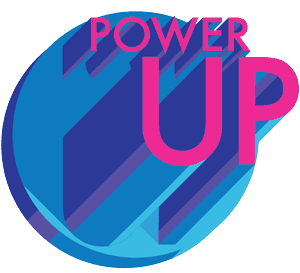

Within a decade, the salt flats of western Utah could become home to a series of vast underground chasms. A quarter of a mile high, their dark, musty interiors will be the centerpiece of an audacious plan to power Los Angeles with renewable energy from wind farms located over a thousand miles away.
The plan begins in Wyoming. California’s winds typically drop in the late afternoon, just as demand for power ramps up when people return home from work. Wyoming’s winds, on the other hand, rise later in the day–allowing the state to produce more electricity when it counts. To harness that energy, a $4-billion, 2,100-megawatt wind farm is planned 40 miles north of the city of Cheyenne. The output will be sent 525 miles to western Utah over a high-voltage transmission line, to be built at a cost of $2.6 billion. There, it’ll be used to inject compressed air into four man-made caves located about 130 miles southwest of Salt Lake City.
The caverns are formed by solution mining, a technique where freshwater is pumped into huge domes of salt below the surface. The water dissolves the salt, then the resulting brine gets pumped back to the surface. Over the course of about two years, an empty, airtight void shaped a bit like a lightbulb is hollowed out. In recent years, artificial caves created in this way have been used for many purposes–to store oil, natural gas, hydrogen, and even hazardous waste. Now, however, energy firm Dresser-Rand believes these caves could be key to an $8-billion scheme for storing renewable energy. “This is the best domed salt formation in the western United States,” said Dresser-Rand’s Blaise Derrico. “Once the salt is mined to size, it’s relatively easy to seal the cavern with no leakage.”
If you could see through the ground, these megastructures would be a remarkable sight. Each would be over 1,300 feet high, nearly 300 feet across, and 38.8 million cubic feet in volume–enough space to store the Empire State Building, with just its antenna poking out above the ground.
Combined, they can store up to 1,200 megawatts’ worth of compressed air for as long as is needed. But when the wind stops blowing and demand for energy is greater than supply, they’ll release the air through a series of turbines. Geoff Manaugh at BLDGBLOG describes the project as “a kind of clockwork weather system buried inside the earth.”
While it would become the world’s largest compressed air plant–equivalent to a large nuclear power plant, and enough to serve 1.2 million L.A. homes–it’s not the first. In 1978, a 321-megawatt storage plant was built in Huntorf, Germany and has been operating continuously ever since. In the United States, the 110-megawatt Power South has been running since 1991, and a 317-megawatt Dresser-Rand-supplied APEX project is under construction in Bethel, Texas.
The last step in the plan is an existing 490-mile transmission line which runs from Utah to California, used today for coal-generated electricity. The company argues it would reduce the need for L.A.-area utilities to build expensive backup power plants for days when there’s no wind, or at night when there’s no sunlight. This need for backup reflects a problem–the inherent spikiness of renewables–for more than just L.A. residents. Wind, wave, and solar just don’t deliver their power in a smooth, controlled stream like a coal, gas, or nuclear power plant. On a bright, sunny day, solar plants hum with power but wind turbines lie dormant. An overcast, blustery day yields the opposite issue. Dresser-Rand’s compressed air storage facility hopes to smooth out these spikes, as the compressed air can be released at any time of day or night, lighting up the grid on demand like a traditional coal or nuclear plant.
The proposal is a response to a call from Southern California’s Public Power Authority to provide wind energy to Los Angeles. The Greater Los Angeles Area is home to 18 million people, and supplying those people with clean energy is an ongoing struggle. The city hit a 20 percent share of renewables in 2010 with the help of a wind energy plant in the Tehachapi Mountains, northwest of the Mojave Desert, but L.A. plans for its share of renewables to hit 33 percent by 2020.
The project, which Jeff Meyer of Pathfinder Renewable Wind Energy (whose company is building the wind farm component) boastfully described as “the 21st century’s Hoover Dam,” will probably not be completed until 2023, at the earliest. But much of the planning work is already done–the $4 billion wind farm and the $2.6 billion transmission line between Wyoming and Utah have been on the drawing board for some time.
Only the $1.5 billion salt bulb storage facility is totally new, and it’s likely the keystone that’ll make the project more attractive to regulators. As such, Dresser-Rand doesn’t expect any major regulatory hurdles. “Compressed air energy storage is easily permitted because of the unusually low emissions per megawatt compared with traditional type electrical power plants,” said Derrico. Once approved, accomplishing the project will merely require securing contracts with utilities to buy the electricity.
With global anti-nuclear sentiment high following the Fukushima disaster and the fossil fuel industry under intense scrutiny over its greenhouse gas emissions, compressed air storage offers exciting hope for energy innovation. If we’re ever hoping to replace coal, oil, and gas plants with renewables on a large scale, we’re going to need it.


How We Get To Next was a magazine that explored the future of science, technology, and culture from 2014 to 2019. This article is part of our Power Up section, which looks at the future of electricity and energy. Click the logo to read more.
